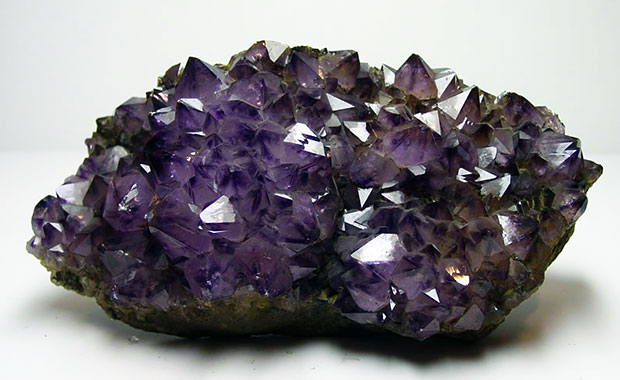Visit the Greene Gallery Virtual Tour to get a glimpse of what the collection holds.
The Thomas A. Greene Geological Museum contains the fossil and mineral collection of Thomas A. Greene, an amateur geologist that lived in Milwaukee in the late 1800’s. At the time of his death in 1894, Greene’s fossil and mineral collection was considered the most valuable of its kind west of Philadelphia. Believing that this world-class collection should remain in its locality of origin, Greene’s heirs, Mrs. H.A.J. Upham and Mr. Howard Greene, entrusted the collection to Milwaukee-Downer College, which later became part of the University of Wisconsin-Milwaukee. They also commissioned the construction of the original Greene Geological Museum building to house it. Designed by noted Milwaukee architect Alexander Eschweiler and designated as National Historic Landmark in 1993, that building remains on UWM’s campus. The collection has been moved, however, and is now administered by the Department of Geosciences and is displayed and housed in Lapham Hall.
 Amythest – Thomas A. Greene Collection (UWM)
Amythest – Thomas A. Greene Collection (UWM)Greene amassed most of the fossils in his collection, totaling about 75,000 specimens, during the 1880’s and 1890’s. The majority of these specimens come from the Silurian Niagara Formation and the Devonian Hamilton Formation in the vicinity of southeastern Wisconsin. Preserved mostly as internal molds in dolomite, these fossils include a wide range of Silurian marine invertebrate groups including trilobites, crinoids, tabulate and rugose corals, brachiopods, cephalopods, and gastropods. Devonian fossils consist mainly of fish and plant remains. All of these fossils were collected from quarry outcrops that no longer exist, making the collection irreplaceable.
The mineral collection contains a wide range of minerals and ores from localities throughout North America, as well as some from overseas. It includes exquisite examples of amethyst, apatite, stibnite, copper, tungsten, molybdenum, vanadium, cobalt, nickel, mercury compounds, aluminum compounds, malachite, lapis-lazuli, tourmaline, garnet, labradorite, fluorite, beryl, and turquoise, among others. Perhaps the highlight of the mineral collection is a piece of iron meteorite that landed in nearby Washington County, Wisconsin. It was given to Greene by the scientist Increase A. Lapham, the namesake of Lapham Hall.
Sping 2024 Hours (1/29-5/9)
| Day | Hours |
|---|---|
| Monday | 9:00 am – 1:00 pm |
| Tuesday | 1:00 pm – 3:00 pm |
| Wednesday | 9:00 am – 3:00 pm |
| Thursday | 8:00 am – 10:00 am & 1:00 pm – 5:00 pm |
| Friday, Saturday, Sunday | Closed |
The Gallery will be closed the week of Spring Break (March 18-22)
The Greene Gallery is CLOSED for the summer except by appointment only. Please contact Brett Ketter (bketter@uwm.edu) for any inquiries.